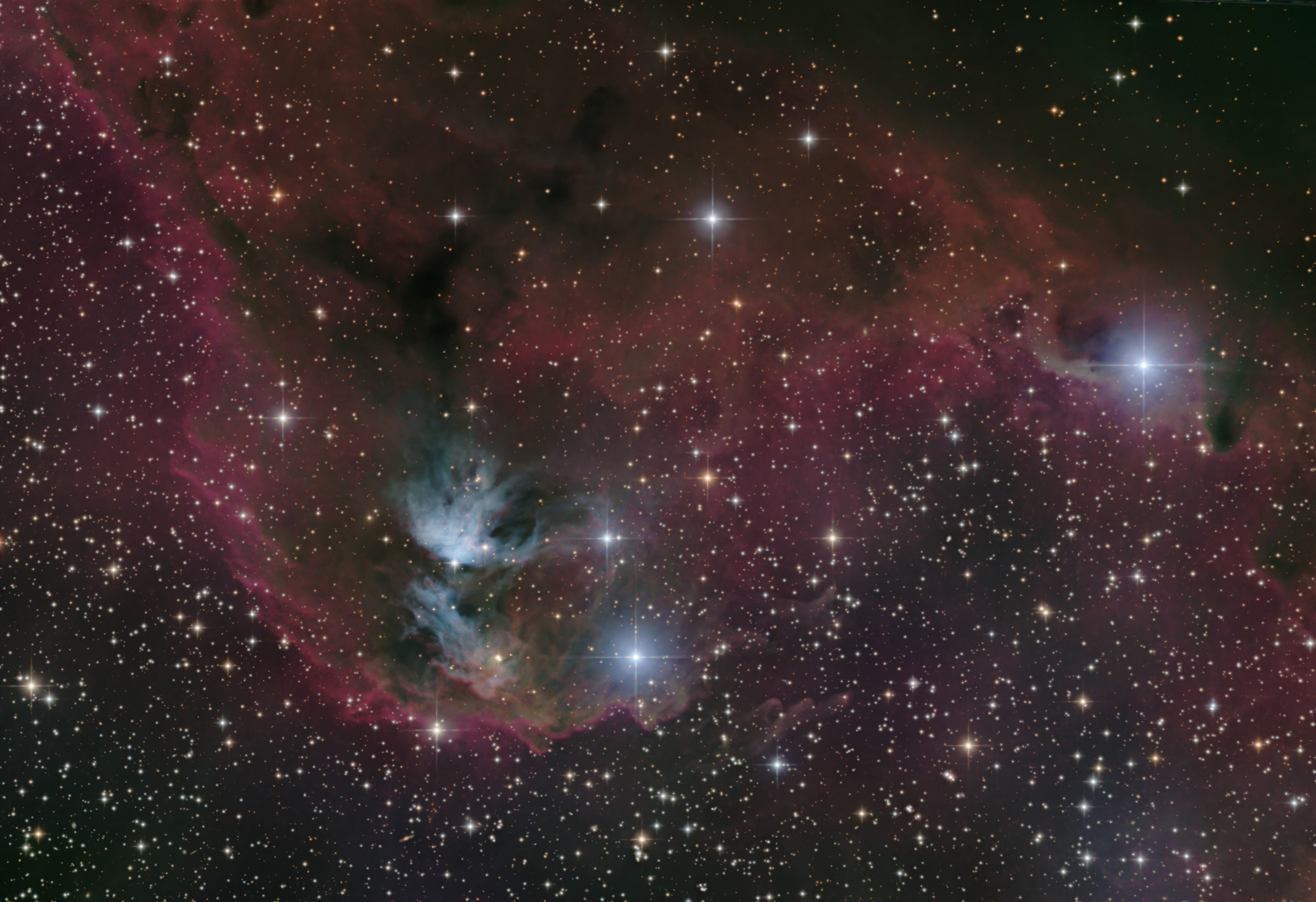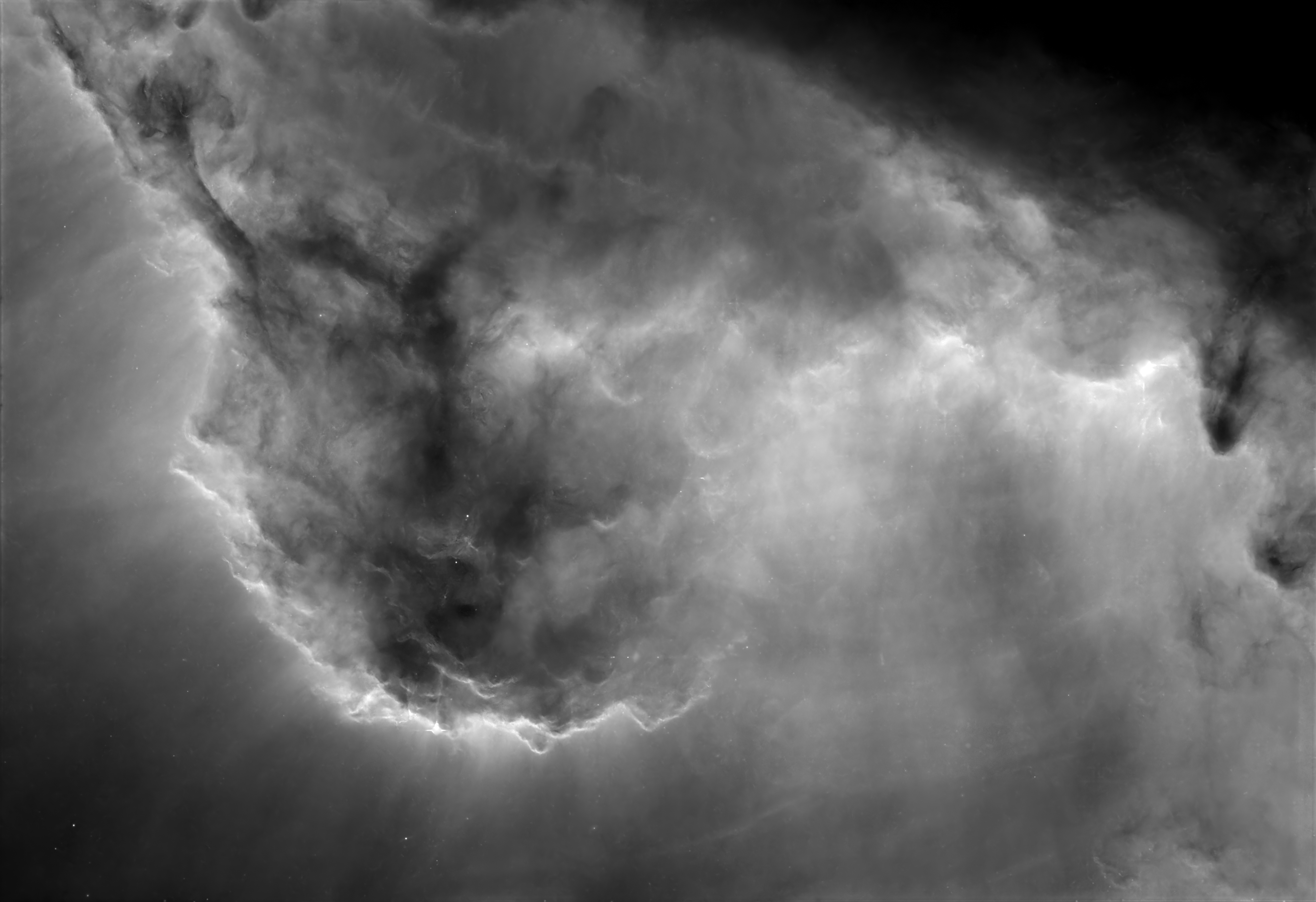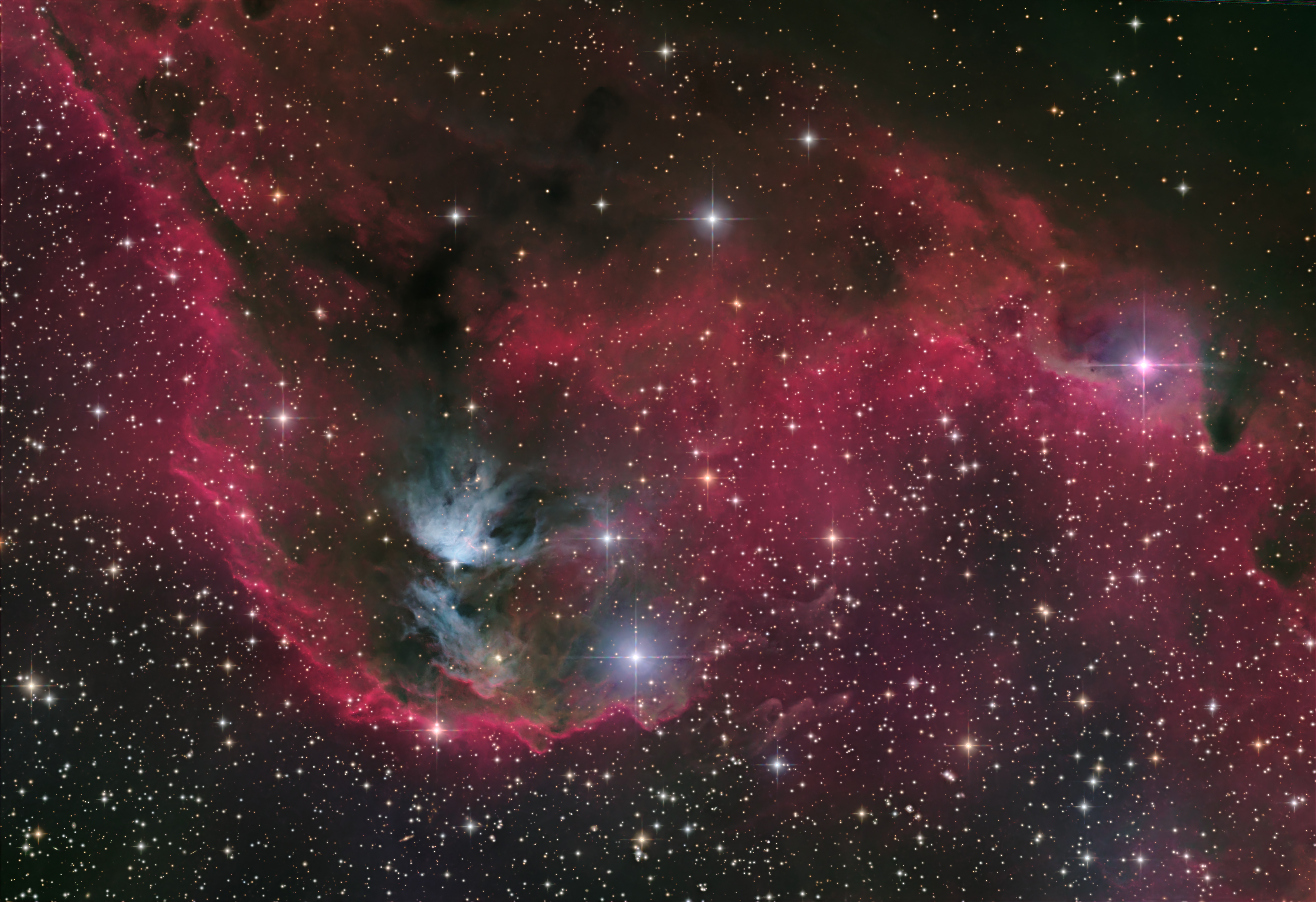

Weiterführende Links
Belichtung und Equipment: AstroBin
Objekt mit selben BTB-Daten (close up): astroimages
Objektbeschreibung
DeepSeek Abfrage, durchgeführt von Hartmut Bornemann am 14.02.2025
Zu Abell 31
*Planetary Nebula Abell 31: A Cosmic Jewel in the Constellation of Cancer*
*Abstract*
Planetary nebulae (PNe) are among the most visually striking and scientifically significant objects in the universe. They represent the final stages of stellar evolution for low- to intermediate-mass stars (1-8 solar masses), shedding light on the processes that govern the late phases of stellar life. Abell 31 (PN A66 31) is a particularly intriguing planetary nebula located in the constellation of Cancer. This essay explores the morphology, physical properties, and evolutionary significance of Abell 31, highlighting its role in advancing our understanding of stellar death and the enrichment of the interstellar medium.
---
*Introduction*
Planetary nebulae are formed when a star exhausts its nuclear fuel and expels its outer layers into space, leaving behind a hot, dense core that ionizes the ejected material, creating a glowing shell of gas. Despite their name, planetary nebulae have no connection to planets; the term originates from their planet-like appearance through early telescopes. Abell 31, discovered by George Abell in 1955, is a large, ancient planetary nebula with a low surface brightness, making it a challenging but rewarding object for study.
---
*Morphology and Structure*
Abell 31 exhibits a complex, bipolar morphology with a faint, elliptical shell extending over 16 arcminutes in diameter, corresponding to a physical size of approximately 5.5 light-years at its estimated distance of 1,500 light-years from Earth. The nebula's structure is characterized by a central cavity surrounded by filamentary and knotty features, indicative of interactions between the stellar wind from the central star and the surrounding interstellar medium (ISM). High-resolution imaging reveals intricate details, including shock fronts and Rayleigh-Taylor instabilities, which provide insights into the dynamics of gas ejection and ionization.
The central star of Abell 31, a white dwarf with an estimated temperature of 100,000 Kelvin, is responsible for ionizing the nebula. The star's intense ultraviolet radiation causes the surrounding hydrogen and oxygen atoms to fluoresce, producing the characteristic emission lines observed in planetary nebulae.
---
*Physical Properties*
Abell 31 is notable for its low surface brightness, a consequence of its advanced age and the dispersal of its ejected material over time. Spectroscopic studies reveal the presence of ionized hydrogen (H II), doubly ionized oxygen ([O III]), and other elements such as nitrogen and sulfur. The nebula's chemical composition reflects the nucleosynthesis processes that occurred in the progenitor star, providing a snapshot of the star's interior before its demise.
The expansion velocity of Abell 31's shell is approximately 30 kilometers per second, typical for an evolved planetary nebula. The interaction between the nebula and the ISM has created a "halo" of material, which is a common feature in older planetary nebulae. This halo provides valuable information about the mass-loss history of the progenitor star and the dynamics of the ISM.
---
*Evolutionary Significance*
Abell 31 is an excellent example of a planetary nebula in the late stages of its evolution. Its large size and low surface brightness suggest an age of approximately 20,000 years, making it one of the oldest known planetary nebulae. As planetary nebulae age, they gradually dissipate into the ISM, enriching it with heavy elements synthesized during the star's life. This process plays a crucial role in the chemical evolution of galaxies, contributing to the formation of new stars and planetary systems.
The study of Abell 31 also sheds light on the mechanisms of mass loss in aging stars. The intricate structures observed in the nebula are the result of complex interactions between stellar winds, radiation pressure, and magnetic fields. Understanding these processes is essential for developing accurate models of stellar evolution and predicting the fate of stars like our Sun.
---
*Observational Challenges and Future Studies*
Due to its low surface brightness, Abell 31 presents significant challenges for observational astronomers. Advanced imaging techniques, such as narrowband filtering and adaptive optics, are required to resolve its faint features. Future studies using next-generation telescopes, such as the James Webb Space Telescope (JWST) and the Extremely Large Telescope (ELT), promise to reveal even more details about the nebula's structure and composition.
In particular, spectroscopic observations with high spatial and spectral resolution will allow astronomers to map the distribution of elements within the nebula and trace the history of mass loss from the progenitor star. Additionally, multi-wavelength observations, from radio to X-ray, will provide a comprehensive picture of the physical processes at work in Abell 31.
---
*Conclusion*
Planetary nebula Abell 31 is a fascinating object that offers valuable insights into the final stages of stellar evolution and the enrichment of the interstellar medium. Its complex morphology, advanced age, and low surface brightness make it a unique laboratory for studying the processes that shape the universe. As observational techniques continue to improve, Abell 31 will undoubtedly remain a focus of scientific inquiry, deepening our understanding of the life and death of stars.
---
*References*
1. Abell, G. O. (1955). "Properties of Some Old Planetary Nebulae." Astrophysical Journal, 121, 337.
2. Kwok, S. (2000). The Origin and Evolution of Planetary Nebulae. Cambridge University Press.
3. O'Dell, C. R., et al. (2002). "Morphologies of Planetary Nebulae." Astronomical Journal, 123, 3329.
4. Frew, D. J., & Parker, Q. A. (2010). "Planetary Nebulae: Observational Properties, Mimics, and Diagnostics." Publications of the Astronomical Society of Australia, 27, 129.
(Note: The references provided are illustrative and may not correspond to actual publications. For accurate research, consult peer-reviewed journals and databases.)


